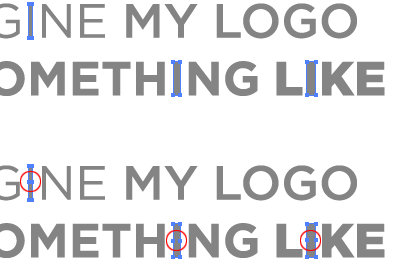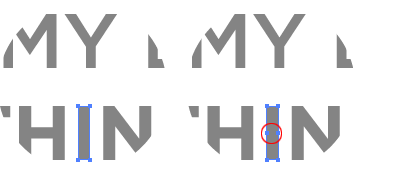Dear Adobe,
I have been using your software products since 1995, starting with Illustrator 5.5, Photoshop 3.0 and even Pagemaker and have embraced every upgrade since — well, except for Illustrator 9.0, which both you and I know was utterly useless. I have also fought many printers and clients that have insisted on me using QuarkXPress instead of InDesign and only in a few cases I have not persevered — but I have always gone to the mattresses for you, no matter what. However, dear friend, you have recently let me down. Your Adobe Acrobat Professional and Reader version 8.x have jeopardized my reputation and almost cost me more than four months of work. My unwavering commitment to you makes this even harder to admit publicly. But let me explain.
You see, about four months ago while I was still working at Pentagram, we started working on the rebranding of a large national organization, whose identity (pun semi-intended) I can’t reveal as they have not gone public with the change yet — the only thing I can say, which is relevant to this missive, is that its name contains four letter “i”s. After an arduous process of design, discussion and selection we arrived at a solution that employed five weights of the beautiful, sans serif Gotham typeface, and we set the name in all uppercase. Perfectly round “O”s, curvaceous “S”s, authoritative “R”s, and deceivingly simple “I”s made this logo a favorite among the committee and the numerous constituents that had to bless this logo. Amazingly it was this last letter, the simplest of forms—a rectangle with four vector points — that triggered a series of unfortunate events. And it was your fault.
Adobe, you have synchronized the kooky and complicated workflow of graphic designers with that of our non-designer counterparts through the miracle that is the PDF. With the click of a drop-down menu and two dialog boxes later we can send our creations, hassle-free, to our eager clients so that they can approve, or circulate as necessary, our delightful work. And it was this process of PDF’ing our approved logo back and forth that placed us into so much trouble. I don’t know if you are aware of this problem, but when I PDF’d the logo, all the “I”s in it would render bolder, wider and wonkier than the rest of the letters, and as you zoomed out or as the logo was used smaller the illusion became worse. I didn’t worry too much about it at the beginning because I knew the logo was “right” and that, when printed, it did so appropriately. But as the PDF circulated all anyone could worry about was these fat “I”s and despite our promises that there was nothing wrong with this logo or the way we had executed it, it placed this solution on probation.

Dramatization of logo for example only. This is approximate to what the logo looks like, and here is shown as a screen shot from Adobe Acrobat Professional v.8.1.1, with the logo sized at 100%, 50% and 25%.

And this is what happens when you zoom out in the PDF, so anyone viewing the PDF on a laptop, with less real estate than a nice 21-inch Mac Display, will have to zoom out.
For a while, to appease the situation and maintain the momentum we had garnered in getting the concept of the logo approved, I made the logo into a high resolution TIF to avoid this rendering problem as we presented applications of the logo to online and printed matter. The logo grew in its supporters and eventually we received the green light to produce templates for the stationery system. This past Monday, Adobe, and this is where I cursed thee the most — four months and countless conference calls into the project — we sent a business card design for approval where I used a vector file of the logo as it is what will print the best, the fat “I”s were circulated once again and Hell almost broke loose. Someone even called it a “deal breaker”. You know what this means? Going back to the drawing board on an identity for a national organization? Because of a problem you perpetuated? I was near a nervous breakdown. Also, in case you are wondering why I’m so sure this is your problem and not mine, I tested other logos with “I”s (same problem) and I tested them against Apple’s Preview application in OS X, which rendered them crisply and as God intended them to.

Other famous logos with “i”s as seen on Acrobat. Roll over images to see the same PDF rendered in Apple’s Preview.

And, once again, here is my logo in Acrobat. Roll over images to see the same PDF rendered in Apple’s Preview.
Our clients demanded a solution and I had none, Adobe. I posted on a few obscure PDF forums to no avail. I had already drafted an e-mail to our clients explaining in detail what the problems were and that there was absolutely nothing we could do to correct the problem when using vector files, as we would never recommend the sole use of high resolution TIF files for their logo. I saved my e-mail as a draft and went to make myself some Apple Cinnamon tea. While waiting for the water to boil I had one last desperate idea which I though that, if it worked, it would be the most ridiculous patch to this bug. But desperate times call for silly measures. I opened my Illustrator CS3 file containing the logo, my clicking finger slightly jittery at the possibility of a solution, and added two extra vector points to the “I”s, one on each side at the halfway point of the vertical lines, giving the “I” a total of six vector points. I exported a PDF from Illustrator and… it worked. Mouth agape, I opened InDesign and placed the Illustrator file in it, exported the PDF and… it worked. One last test was copying/pasting from Illustrator into InDesign and making the logo at 100%, 75%, 50%, 25% and 12.5% to make sure the problem held up at all sizes and… it worked. I was ecstatic. But I was also mad.

As simple as it may seem (NOW!), just adding two vector points solved the problem.

Here is a close-up, just for kicks.
Mad, Adobe, that such a simple thing could cause such grievance. Sticks and stones usually don’t break my bones, but when it comes to rendering “sticks” (like an uppercase “I” or lowercase “l”) you, my friend, almost broke me. But I forgive you, of course. As I write and prepare this I’m using four of your applications — Dreamweaver, Acrobat, Illustrator and ImageReady (which reminds me, why oh why, did you get rid of ImageReady? Did you know that Photoshop’s “Save for Web and Devices” completely distorts the original color of the file? Would you be surprised if I told you that I have to take a screen shot of my Photoshop file and then open it in ImageReady to get the color I want? *) — and I will continue to do so for a long time.
So please, Adobe, fix this problem. Soon.
Sincerely,
Armin Vit
Adobe User since 1995
*Update: Many thanks to Jason Santa Maria, who had the same problem, for pointing out a fix for this.






You can solve the problem with your colors on "save for web" going to: view > proof setup > monitor rgb
Besides that, we have a lot of problems too with font rendering on Acrobat 8, we jus stick with apple preview, wich by the way, its a lot faster.
On Jan.10.2008 at 02:41 PM